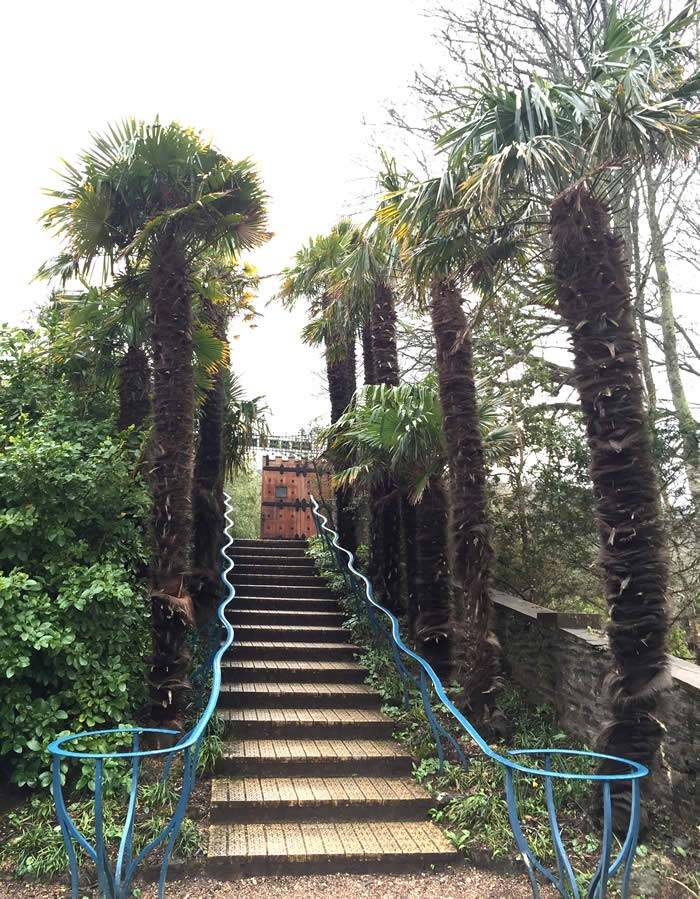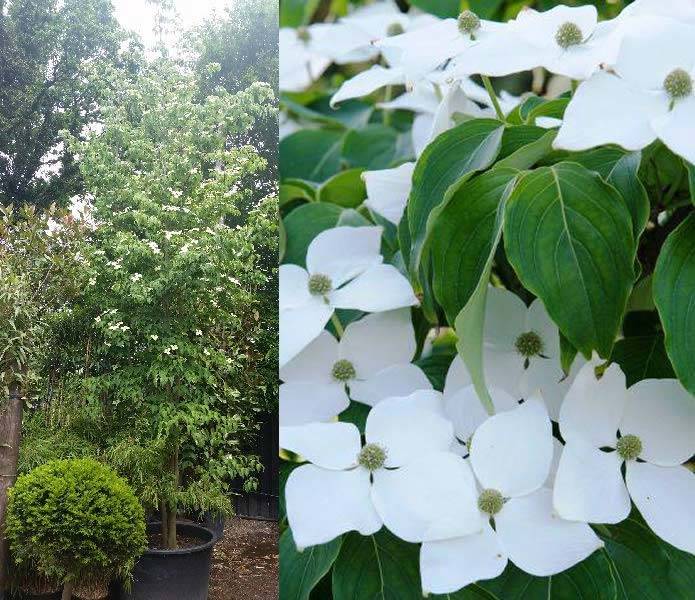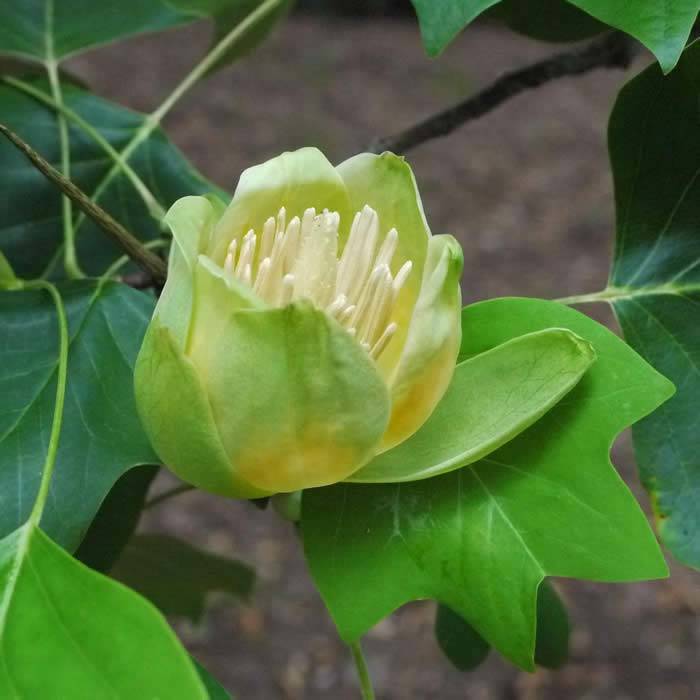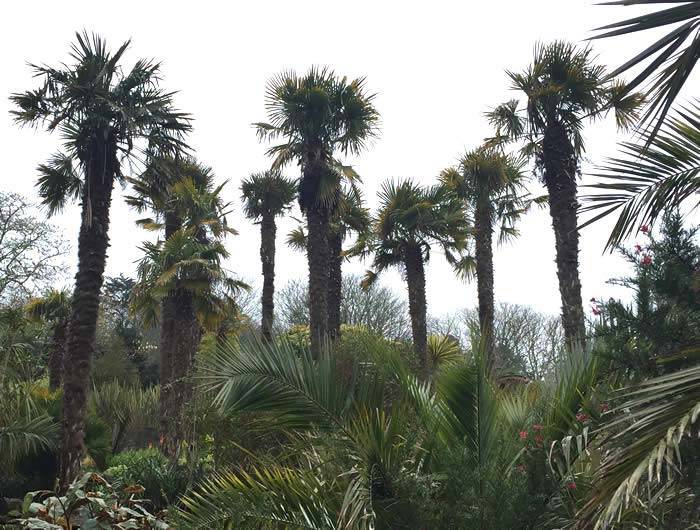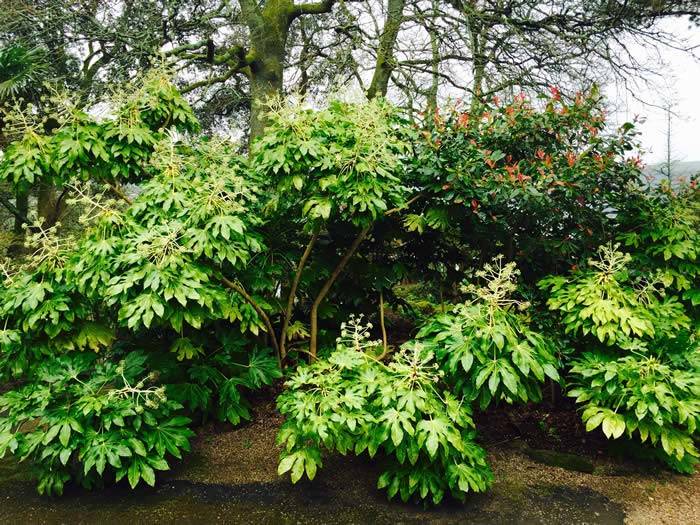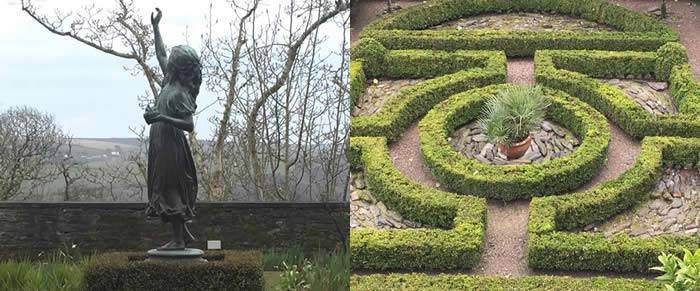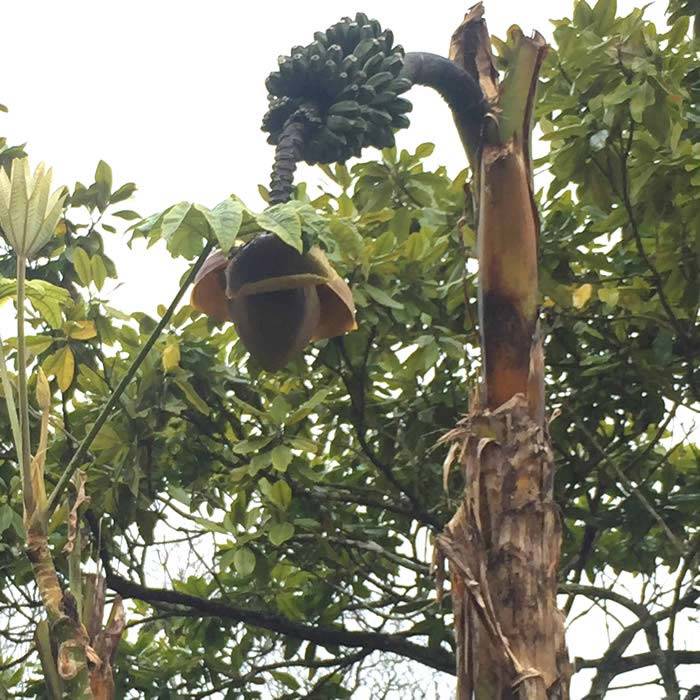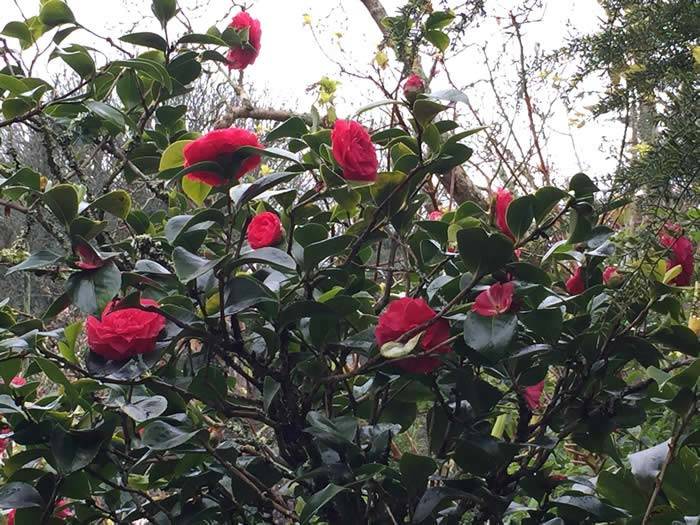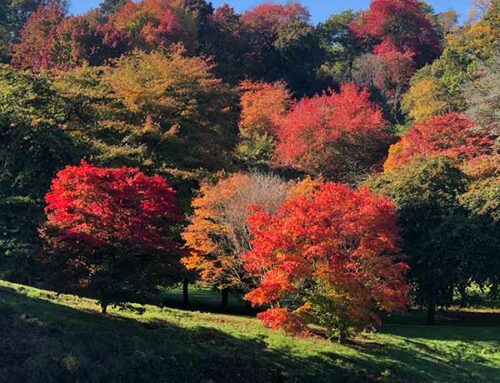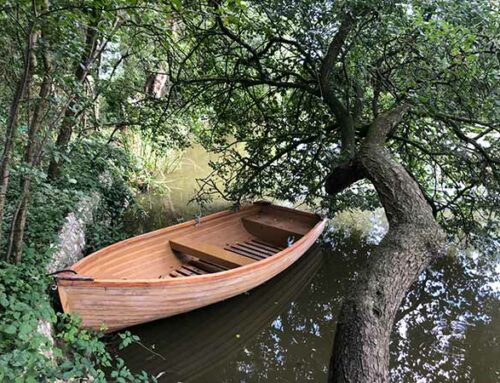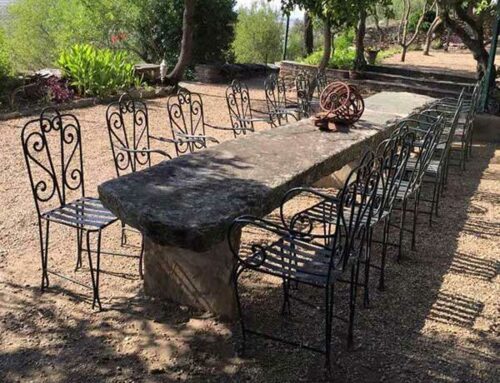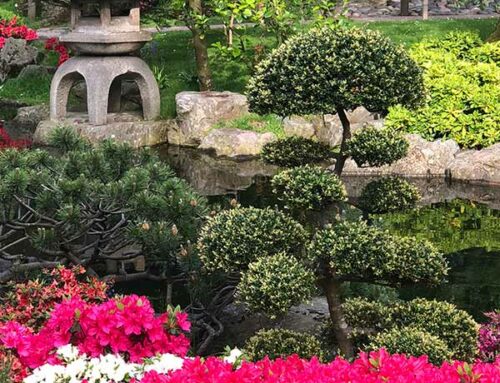From North and South Sands you start the climb, higher and higher, up the winding hill, with stupendous views across Salcombe Estuary, all the way to the very clifftop – here you are amply rewarded for your effort by the fabulous coastal and tropical garden at Overbeck’s.
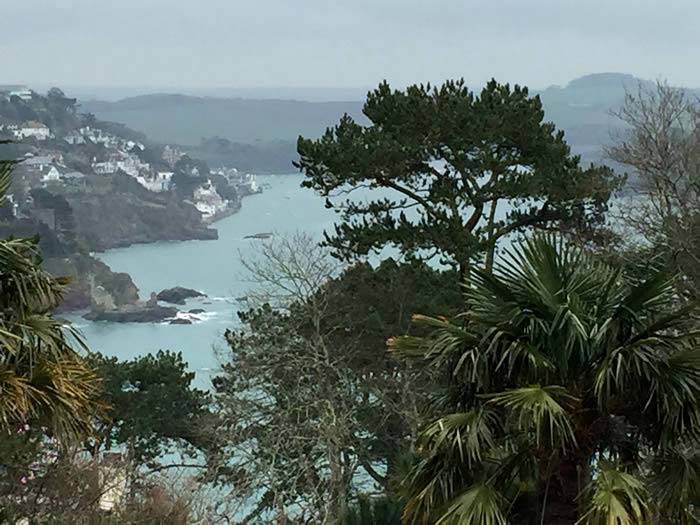
Salcombe Estuary View From Overbeck’s Garden
Although only around 3 hectares in size, so many fabulous plants and styles are represented here – with many historical plantings that continue to thrive today. The house and garden were originally created in the late 18th Century and formerly known as Sharpitor from the nearby Sharp Tor. The location is dramatic and romantic and it is easy to see why this garden has captivated so many over the years.
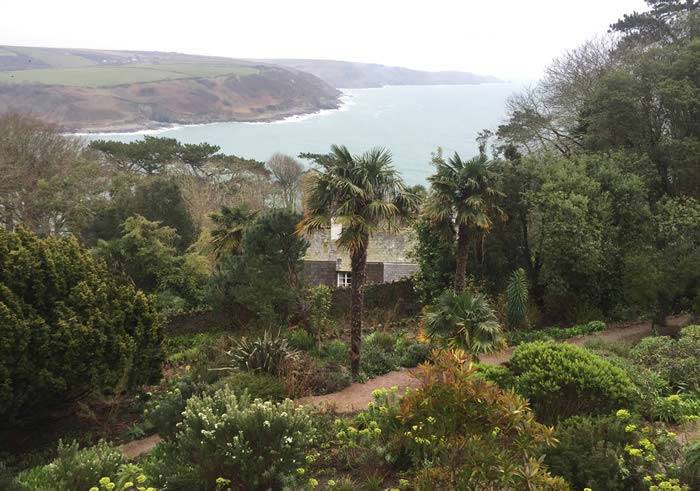
Overbeck’s Garden – View Towards The Sea
It is surprising, given its rather exposed position and close proximity to the coast, that so many tender plants grow here with such abandon. But, this is South Devon, the garden faces south and the microclimate here allowed plant selection from the four corners of the globe. The first glimpse of the avenue of mature Chusan palms prepares you, leading you down the steps, towards the house and gardens beyond.
As with any garden that has evolved over 150 years – the influences have been many and diverse. The original owner, Edric Hopkins, laid out the winding paths that lead you through the various enclosed garden areas like so many rooms, one after the other. Edric used the very stone from the cliff side to create the main terraces and it was surely a monumental task.
However, it is the exotic planting schemes, introduced during the ownership and stewardship of Otto Overbeck that have ensured the garden’s survival for the coming generations of plantsmen, gardeners and visitors to enjoy. It was Otto’s interest and obsession with tropical plants and hardy palms that has made Overbeck’s the special garden it is today.
When Otto died in 1937, he left the house and garden to the National Trust, on condition it was named after him in perpetuity. Many of the original trees and shrubs planted by Otto in the 1920’s-1930’s are still alive and well. One of the many exotic trees to look out for is Cornus Kousa Szechuan Strawberry – the Chinese dogwood tree
Agapanthus Africanus – the Blue African Lily is planted en masse between the palms and the aptly named Angel’s trumpet, Brugmansia Sanguinea, displaying the most other-worldly shaped flowers…
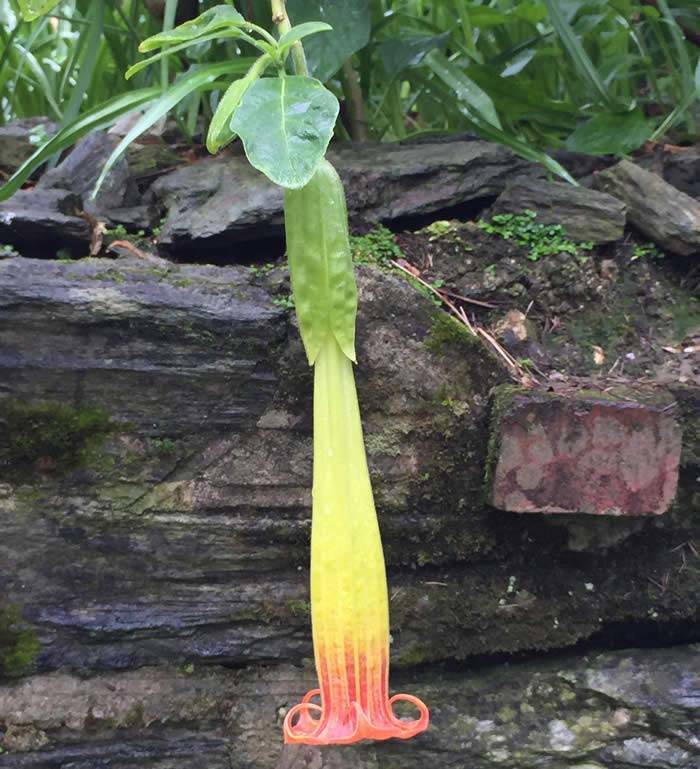
Brugmansia Sanguinea – Angel’s trumpet flower
Visit the gardens in May to June, for a very special sighting of the unusual flowers of the Tulip Tree – Liriodendron Tulipfera
The Palm Garden
Otto planted over 3000 palm trees at Overbeck, the Palm Garden is reminiscent of the Mediterranean and many of these Chusan Palms date from the 1930’s and are a splendid sight. Make no mistake though, Trachycarpus Fortunei is the hardiest palm in the world, it is grown successfully throughout the UK and is prized for it’s architectural shape and leaf formations. These specimens at Overbeck’s are the original trees which have now grown to imposing heights.
Clustered around them are other hardy palm varieties including Butias and many varieties of grasses and perennials.
The Woodland Garden and Magnolias at Overbeck’s
There are many interesting and contrasting juxtapositions as you meander through the Woodland garden – this pairing of a gigantic and jungly Fatsia Japonica with a rambling Photinia Red Robin shrub works well on many levels – the startling contrast of leaf colours, the architectural shape of the Fatsia and the Red Robin’s new Spring growth of red tips really catches the eye.
One of the most renowned and important collections of Magnolias is at Overbeck’s, the original trees came from Joseph Hooker, the famous plant collector, brought back from his trip to the Himalayas in 1849. The original tree has now been propagated and formally renamed – Magnolia Campbellii ‘Overbecks’ one of these specimens has already been planted in Japan and this move will ensure these magnificent trees will live on.
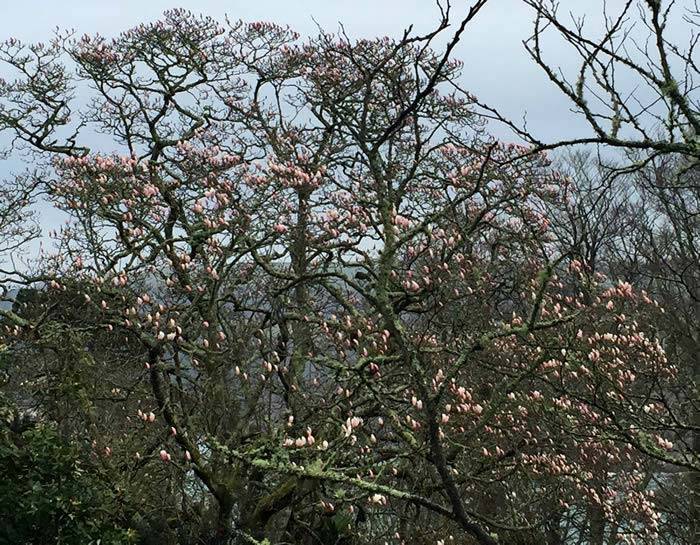
Magnolia Campbellii Overbecks – the original trees were brought back by Joseph Hooker from the Himalayas
The Statue Garden and the Secret Garden
These separate and quite hidden garden rooms, are exquisite surprises as you follow the intriguing pathways, there is a new discovery around every corner… Formerly a tennis court, The Statue Garden has planted square beds which by mid-summer will be a blaze of hot colours, a strong contrast with the neatly mown paths.
Peer over the boundary wall to glimpse the geometric shapes of the parterre.
The Banana Garden
A grove of banana plants are not only growing outside – but producing fruit – in April!
Adjacent to the banana garden, a small gazebo conservatory has citrus trees inside, stop and sit for a while, the blossom perfumes the air with its delicious fragrance.
Camellias
In the midst of all this tropical lusciousness, these elegant and extravagant, blood red Camellias are a highlight of the Woodland garden, preferring slightly acidic soil, they are very much at home here, on the South Devon coast.
Overbeck’s is interesting, not least for its historical context, for this was surely a garden that was viewed as being unbelievably exotic and unusual in it’s time and the plants were indeed brought from far and wide by some of the world’s most famous plant collectors. Now, we look at such a garden, with the full knowledge that all of us can grow most of these plants and shrubs, in all but the very harshest areas of our UK climate.
Hardy Tropical palms are now found in coastal gardens and London roof terraces, bamboo is grown for evergreen screening, Magnolias line our streets and lush Tree Ferns abound, in gardens and patios throughout the UK.
We owe a debt of gratitude to Otto Overbeck and his contemporaries, they were at the vanguard of introducing these amazing plants to the UK – for all of us to grow and enjoy.
Overbeck’s Garden at Salcombe, South Devon, is open throughout the year and is owned by the National Trust.
Paramount Plants specialises in Tropical Hardy Palms , Bamboos, Tree Ferns and Mediterranean Planting, if you’re inspired by this style of garden – please contact us to discuss your requirements.
We welcome your email enquiries, reach out to our expert team –
[email protected]
Paramount Plants – The UK’s Online Specialists For Mature Trees, Shrubs & Plants. Buy Online – we deliver nationwide throughout the UK

